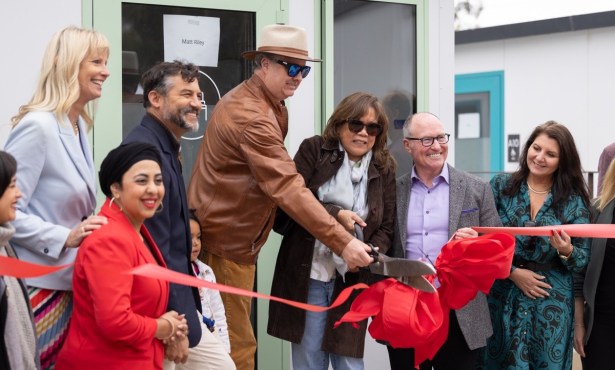County Hit with Suicide Spike
Mental Health Experts Struggle to Explain Why

This year so far, 71 Santa Barbara County residents have taken their own lives. It is the highest number of suicides in the past 15 years, and 10 more than the most recent peak in 2009 during the Great Recession. The annual average since 2000 has been 47.
“It’s way high, and we’ll have a few more before the end of the year,” said clinical psychologist Dr. Lisa Firestone with the Glendon Association, a Santa Barbara–based mental-health organization. “Even with variation year-to-year, that’s a big increase,” agreed Dr. Paul Erickson, Santa Barbara Cottage Hospital’s director of psychiatry.
In March alone, 12 people committed suicide. A 22-year-old woman in Isla Vista took a lethal amount of pills, a 56-year-old Montecito man hung himself from a tree, and a 69-year-old Santa Maria resident died from a self-inflicted gunshot to the head. In October, the Santa Ynez Valley was hit with two back-to-back murder-suicides, and just last month a troubled Goleta teen died after running into freeway traffic.
Contrary to popular belief, suicide rates tend to rise in the spring and summer, not during the winter. Severely depressed individuals may not be able to summon the energy to attempt suicide during colder months, while springtime and its expectation of happy days can intensify feelings of isolation.
Yet the reasons behind this year’s overall spike remain unknown. A review of county coroner reports didn’t reveal any clusters or age patterns, and the frequency of specific methods appear consistent over the years, though deaths by asphyxiation and train jumped slightly in 2015. Santa Barbara Cottage Hospital even reported a drop in suicide-attempt patients this year (26) compared to last year (43).
“It’s a bit mysterious to me,” said Erickson. Usually, economic hard times push the rate up. But things aren’t particularly bad right now, he said. And the availability of mental-health services hasn’t changed much in recent years, he went on. Erickson noted, however, that more resources are still needed to help county residents experiencing abrupt crisis or prolonged pain. It’s a significant shortfall across the country, he said.
Other health care providers said they’re keeping an eye on a nationwide trend that may have some bearing on Santa Barbara’s numbers. Princeton economists made the startling discovery this fall that the life expectancy of middle-aged white Americans is actually falling, explained by an “epidemic” of suicides and afflictions brought on by alcohol abuse and prescription opioid addiction. In contrast, the life expectancy for middle-aged blacks and Hispanics is climbing, as are rates for younger and older people of all races.
According to the most current figures from the Centers for Disease Control — which has described suicide as “an increasing public health concern’’ — the national rate went up 2 percentage points between 1999 and 2013. California’s was slightly lower. In that same time, the number of Americans between the ages of 35 and 64 who took their own lives rose by almost 30 percent.
Suicide was the 10th leading cause of death for all ages in 2013; there were 41,149 suicides, which equates to one every 13 minutes. An estimated 3.9 percent of adults reported having suicidal thoughts in the past year; 17 percent of 9th- to 12th-grade students seriously considered attempting it. Males take their own lives at nearly four times the rate of females, but women are much more likely to have thoughts of self-harm.
Firestone, who regularly trains doctors on how to best treat suicidal patients, said she’s seen a jump within Santa Barbara’s working class over the last few years. Before that, the trend was among teenagers. She wonders if the new reality of delayed retirement factors into depression rates. “When you can’t make enough to support yourself or your retirement, that can be very difficult,” she said. A feeling of hopelessness paired with access to guns can be especially deadly, added Suzanne Grimmesey with the county’s Alcohol, Drug and Mental Health Services.
Doctors and therapists stress that the choice to end one’s life is rarely an impulsive decision made in a moment of despair. Instead, the choice often comes after especially dark periods of depression and a howling desperation for relief. The inner pain can be unimaginable, they say, but it’s important for the public to try and understand the depths of that struggle so as to generate empathy and effective treatments.
Luckily, mental-health workers in Santa Barbara and beyond say they’re learning about new ways to prevent, or at least curtail, incidents of suicide — both short-term care, like the kind provided by the county’s new crisis stabilization unit, can help keep people stay alive in times of immediate need, and longer-term strategies, like teaching individuals how to recognize their personal warning signs and then talk themselves off the ledge, may mean lasting recovery.
“It’s about getting higher functions of the brain working, instead of emotion running things,” explained Firestone. She tells patients to look at family photos or listen to music when they’re feeling despondent. Sometimes just being in a public space can bring relief. And sleep is important — not enough can make a person impulsive and aggressive. “We want to help people understand there’s a part of them that wants to kill themselves, but they can stop that part from winning.” The challenge, she stated, is helping patients remember those strategies when they’re in crisis mode.
That’s why it’s important that friends, family, coworkers, and even strangers be sensitive to those fighting inner demons, Firestone said. A simple connection may start pulling them from the depths. “Reach out. Smile at people. Be willing to talk to someone if they’re upset,” she said. “Half of the time they’ll tell you to get lost, but the other half, they’ll know you care, and that can mean everything.”

Anthony Rodriguez has made it his life’s mission to be the one to listen. As the driving force behind the Santa Barbara Response Network, he regularly connects with those who are contemplating or have just attempted suicide, and the families of those who’ve succeeded. Rodriguez is the survivor of childhood abuse and an intentional overdose, and so he knows with personal intimacy the feelings of isolation and shame that can spiral out of control. And he recognizes how difficult it can be to ask for help. “You have no idea,” he said of the fear that comes with speaking up, given the stigmas around mental illnesses like schizophrenia and bipolar disorder.
Rodriguez can’t explain this year’s spike, either. “It’s very worrisome,” he said, remembering a particularly tough case of a 5-year-old killing himself after being bullied. But he also recalled his time with a 16-year-old mother struggling with addiction and at risk of losing her child to foster care. She called Rodriguez after she cut her wrists at the beach. The teen survived, forged through recovery, and recently graduated high school. “When you fight the fight, that makes it all worth it,” Rodriguez said.
The best help he can offer, he explained, is to be a neutral, nonjudgmental shoulder to cry on, and to remind people that they’re loved, even when it doesn’t feel that way. Rodriguez also decried the lack of mental-health services regionally and nationally. “It’s not just the family’s issue,” he said. “It’s all of our issue.”
This Monday evening, Rodriguez spoke at a confirmation class at Our Lady of Guadalupe Church, where he volunteers as an educational outreach worker. A dozen middle school and high school students nibbled pizza and listened to him talk about friendships and self-worth. Most of the time they kept their arms crossed, but when Rodriguez asked how many of them knew someone who had committed suicide, three hands went up. When he asked how many knew others who had talked about suicide, three more were raised.
And when Rodriguez asked how many of the students had thought about killing themselves, there was a silence until one teen slowly put up his hand. “I’m very proud of you,” Rodriguez said. “It’s not an easy thing to talk about.” People do care, he said; “I care.” But the only way to give yourself a chance is to ask for help, “because you’re so important.”
Afterward, as Rodriguez prepared to step into his next class, he remarked how glad he was the teen had been honest. Rodriguez had been keeping his eye on him for some time. “It makes it so much better to know someone is listening,” he said. “We can all make that difference in someone else’s life.”
4•1•1
If you or someone you know is thinking about hurting themselves, call 9-1-1 or the 24/7 National Suicide Prevention Lifeline at 1 (800) 273-8255. A list of regional resources can be found at countyofsb.org/admhs.


